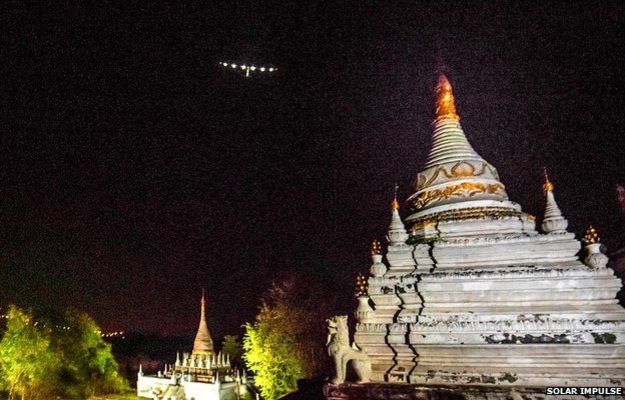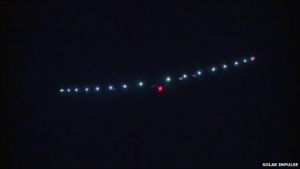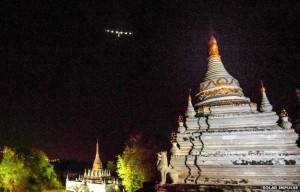
Fuel free Solar Plane sets two world records!
Solar Impulse, the fuel-free aeroplane, has completed the fifth leg of its round-the-world flight, with Bertrand Piccard at the controls, touched down in Chongqing in China just after 17:30 GMT on Monday 30th March 2015. The solar plane with 17000 solar cells, with 4-meter long propellers and 4 electric engine and a wingspan of 72 meters weighting 2.3 tonnes at an average speed of 70km/h. t is almost three weeks since the venture got under way from Abu Dhabi.
It is their intention to circumnavigate the globe to be completed in a total of 12 legs, with a return to the Emirate in a few months’ time. Bertrand Piccard is sharing the flying duties in the single-seater plane with his business partner, Andre Borschberg. Solar Impulse has already set two world records for manned solar-powered flight on the journey so far.
The first was for the longest distance covered on a single trip – that of 1,468km between Muscat, Oman, and Ahmedabad, India.
The second was for a groundspeed of 117 knots (216km/h; 135mph), which was achieved during the leg into Mandalay, Myanmar, from Varanasi, India.
No solar-powered plane has ever flown around the world. It had left Mandalay in Myanmar (Burma) some 20 hours previously.
The intention had been to make the briefest of stops in Chongqing before pushing on to Nanjing in the east of the country, but that strategy has been abandoned because of weather concerns.
The team will now lay over in southwest China until a good window opens up on the east coast at some point in next few days.
Landing in the city of Nanjing would set up Solar Impulse to make its first big ocean crossing – a five-day, five-night flight to Hawaii.
Leg five he had to cover a distance of 1,375km, and faced some difficult winds as he approached Chongqing Jiangbei International Airport. Local controllers also asked the Swiss pilot to delay his arrival for a short while because of the pressure of commercial traffic.
Solar Impulse, with Andre Borschberg at the controls, left Ahmedabad early on Wednesday, touching down a little over 13 hours later in darkness in Varanasi.
It will be just a short “pit stop” in India’s northeast before the vehicle pushes on over the Bay of Bengal.
The leg to Mandalay in Myanmar (Burma) will be flown by Bertrand Piccard.
The two pilots are taking it in turns to guide Solar Impulse on its circumnavigation of the globe.
So far, they have covered about 3,000km in the three segments flown since beginning the adventure in Abu Dhabi on 9 March.
It will likely be another five months before they return to the United Arab Emirates, having crossed both the Pacific and Atlantic oceans in the process.
But then Borschberg completed the roughly 1,100km from Ahmedabad to Varanasi slightly faster than had been anticipated.
“In Varanasi, we can expect to have foggy mornings, which could be a problem for an early take-off,” explained Christophe Beesau, the flight strategist.
“And for leg four, of course, we will cross the Bay of Bengal. This may be challenging because we have often at altitude an important wind, and, on the other hand, due to air traffic control restrictions, we have to keep the track.
Also, about two hours before landing in Mandalay, Solar Impulse will have to fly over a big range of mountains up to 3,000m in height.
It will aim to get this done before sunset so that it can then gently descend towards the Myanmar city in the dark.


